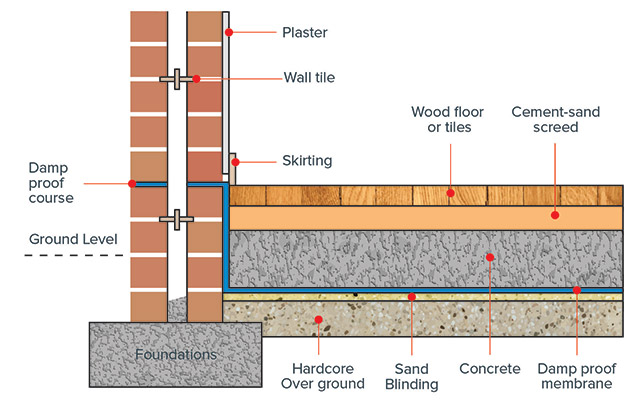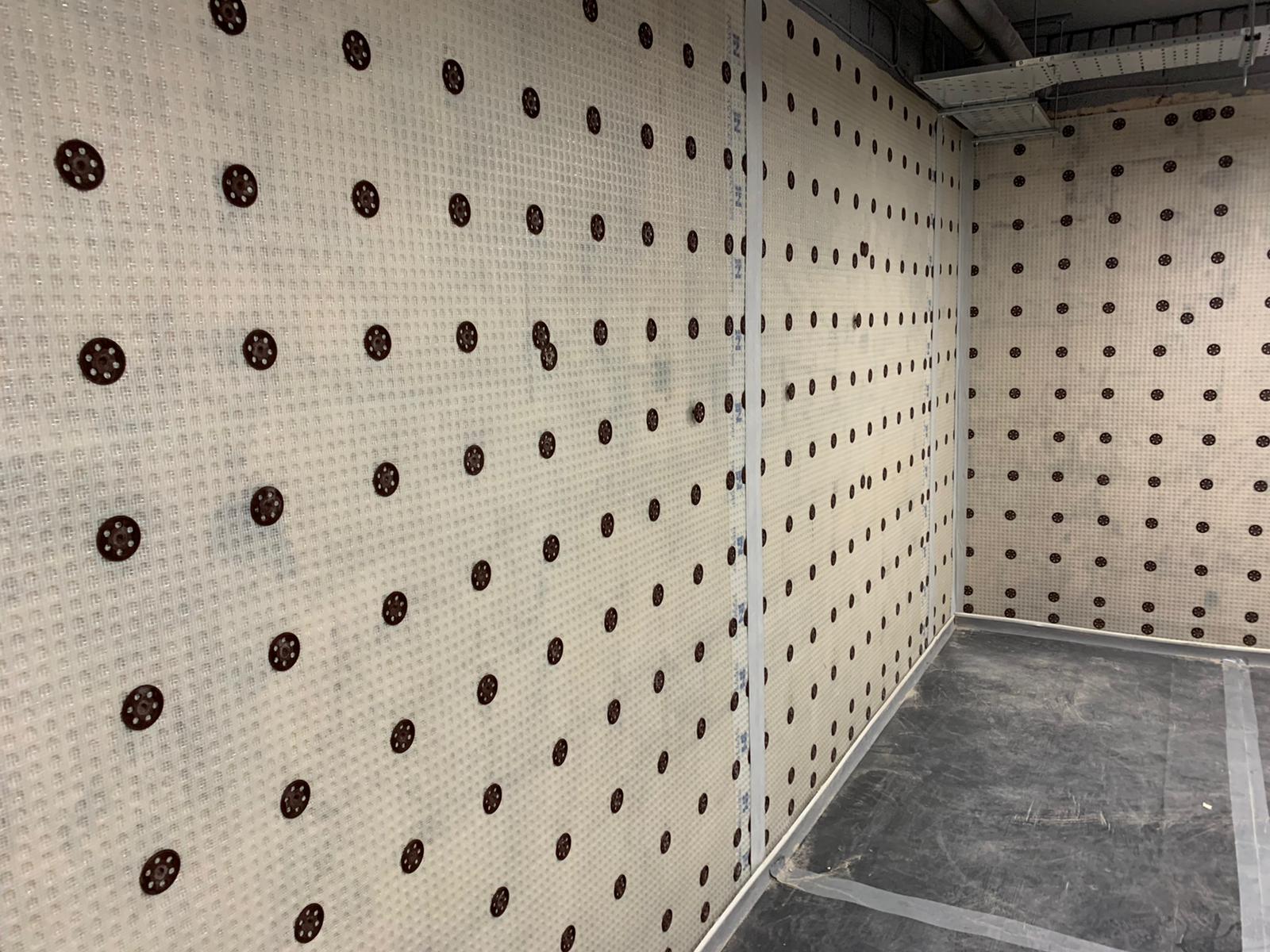How to identify early signs of rising damp: A must-read for landlords in damp proofing newcastle
How to identify early signs of rising damp: A must-read for landlords in damp proofing newcastle
Blog Article
Recognizing the Significance of Damp Proofing in Preventing Structural Damages
Damp proofing functions as an important defense versus moisture seepage in structures. This safety measure can stop substantial structural damages, yet numerous homeowner continue to be not aware of its importance. Acknowledging the indications of dampness and comprehending the various remedies offered can be necessary. However, disregarding wet proofing can result in serious consequences. What are the certain dangers and services that home proprietors should consider?
What Perspires Proofing and Just How Does It Function?
Damp proofing works as a necessary obstacle versus moisture breach in structures. damp proofing newcastle. This process involves using certain products and methods to avoid water from penetrating wall surfaces, floors, and other architectural elements. Usually, moist proofing can be achieved with the installation of damp evidence membrane layers, coverings, or using specialized sealants.These techniques function by creating a protective layer that hinders dampness movement, ensuring that the indoor setting remains dry and healthy and balanced. Moist proofing is especially crucial in areas vulnerable to high humidity or groundwater, as it aids keep the integrity of the structure over time.Moreover, reliable wet proofing adds to power effectiveness by avoiding heat loss related to wet environments. By addressing possible moisture problems prior to they intensify, damp proofing functions as an aggressive measure in safeguarding structures from the destructive results of water damage, inevitably lengthening their life-span and preserving their worth
Usual Indicators of Wetness in a Building
Wetness problems within a building can show up through a number of noticeable indicators that suggest the existence of moisture. One famous indicator is the look of water stains on walls or ceilings, which frequently indicates moisture infiltration. Furthermore, peeling off or bubbling paint can recommend that excess moisture is caught underneath the surface area, leading to wear and tear. One more common sign is the presence of mold and mold, which prosper in damp conditions and can commonly be determined by their stuffy odor. Furthermore, a rise in moisture degrees can trigger condensation on windows and various other surfaces, highlighting wetness troubles. Finally, uneven or warped flooring may signal underlying wetness that endangers architectural honesty. Identifying these indications early can aid mitigate possible damage and keep a safe living atmosphere. Regular examinations and punctual activity are important in resolving dampness issues prior to they escalate.
The Threats of Ignoring Damp Proofing
Overlooking wet proofing can result in considerable risks to a structure's structural stability, as moisture buildup may damage wall surfaces and foundations. Furthermore, prolonged dampness creates an environment for mold development, posturing serious wellness risks to owners. Attending to these threats is crucial for making sure both safety and security and long life of the building.
Architectural Honesty Threats
They subject their homes to substantial structural honesty dangers when property owners overlook the relevance of reliable moist proofing. Long term dampness seepage can lead to the growth of mold, which deteriorates foundational components and can compromise general stability. Furthermore, excess wetness can erode concrete and brickwork, resulting in splits and structural failures. Timber parts are specifically susceptible; they can rot and shed load-bearing ability, presenting significant dangers to the building's structure. Untreated damp conditions may attract parasites, such as termites, which further worsen architectural damage. Ultimately, ignoring wet proofing steps can bring about pricey repairs and potential safety dangers, emphasizing the essential role of aggressive moist management in protecting the stability of homes.
Health Hazard Issues
Just how can a relatively small oversight result in significant health threats? Ignoring moist proofing can produce an atmosphere favorable to mold growth, which positions considerable wellness risks. Mold and mildew spores can activate allergies, respiratory concerns, and other health difficulties, especially in prone populaces such as kids, the senior, and individuals with pre-existing problems. Additionally, consistent wetness can draw in pests like pests and rodents, which bring diseases that better compromise wellness. The visibility of wetness also contributes to a decline in indoor air top quality, aggravating asthma and various other respiratory system disorders. As a result, the failure to deal with moist concerns not only endangers structural honesty yet likewise threatens the well-being of owners, highlighting the essential requirement for reliable moist proofing steps.
Different Types of Damp Proofing Solutions
Although various aspects can add to damp issues in structures, choosing the ideal wet proofing remedy is necessary for preserving structural integrity. Several choices are readily available, each customized to certain conditions.One usual service is a damp-proof membrane layer (DPM), normally made of polyethylene or bitumen, which is installed in walls and floorings to avoid wetness ingress. One more option is damp-proof courses (DPC), which are layers of water-proof material put within wall surfaces to obstruct rising damp.Chemical damp proofing involves injecting waterproofing chemicals right into walls to create a barrier versus moisture. In addition, exterior treatments such as tanking, which includes using a water resistant layer to the beyond structures, can be effective in protecting against water penetration.Each service has its benefits and is chosen based upon the structure's particular concerns, ecological problems, and long-term upkeep considerations, making certain perfect security against damp-related damage.

The Cost of Damp Damages vs. Prevention
Understanding the financial ramifications of damp damage contrasted to prevention highlights the significance of proactive actions. The costs related to damp damage can be substantial, including repairs to architectural aspects, mold removal, and potential health-related costs. Home owners may face significant economic pressure if comprehensive damages happens, causing raised insurance costs and lost residential or commercial property value.In contrast, buying wet proofing solutions is commonly far a lot more cost-effective. Preliminary expenditures for prevention methods, such as installing damp-proof membrane layers or boosting drain systems, are often outweighed by the lasting cost savings from staying clear of pricey repairs. Additionally, avoiding wet concerns can improve a property's overall worth and appeal, making it a smart financial investment. When examining the price of moist damage versus prevention, it becomes clear that taking aggressive steps can safeguard monetary rate of interests and keep the integrity of the residential or commercial property with time.
Picking the Right Damp Proofing Technique for Your Building
Which moist proofing method is most appropriate for a certain property typically depends upon numerous factors, consisting of the structure's click here age, existing dampness issues, and regional ecological problems. For older structures, typical techniques such as bitumen membranes or cementitious layers may be extra reliable, as they can provide a durable obstacle versus rising moist. On the other hand, newer buildings may benefit from modern services like injected damp-proof training courses, which are less intrusive and can be tailored to specific moisture challenges.Additionally, properties in locations with high water tables or hefty rains may need advanced methods, such as tooth cavity wall drain systems or outside waterproofing. Home owners must additionally think about the details products used in their building's building, as some methods might not work. Ultimately, a comprehensive evaluation by an expert can assist homeowner in selecting one of the most effective wet proofing approach tailored to their special scenarios.
Keeping Your Damp Proofing System In Time
Regular upkeep of a damp proofing system is necessary for guaranteeing its lasting effectiveness and shielding a residential property from moisture-related damages. Homeowner should carry out regular examinations to determine any type of signs of wear or concession in the damp proofing layer. This consists of monitoring for splits, peeling paint, or mold and mildew development, which may show dampness intrusion.Additionally, it is suggested to tidy rain gutters and downspouts routinely to stop water build-up around the foundation. Reapplying sealers or membranes may be necessary if deterioration is observed.Engaging expert services for routine assessments can additionally enhance the resilience of the system. These professionals can offer understandings into potential susceptabilities and recommend prompt repair services.
Often Asked Concerns
Just How Long Does Damp Proofing Therapy Last Prior To Requiring Repair Services?
The longevity of wet proofing treatment commonly varies from 10 to 30 years, relying on variables such as the method utilized, ecological conditions, and maintenance techniques. Routine assessments can help identify when repairs may be essential.
Is Do It Yourself Damp Proofing Effective Compared to Expert Providers?
The performance of DIY damp proofing differs substantially. mould removal newcastle. While some individuals might achieve satisfying results, expert services usually guarantee detailed options, leveraging expertise and quality materials to prevent future issues a lot more reliably than many DIY attempts
Can Damp Proofing Improve Indoor Air Top Quality?
The inquiry of whether damp proofing can boost indoor air top quality arises regularly. Effective damp proofing decreases wetness degrees, thereby decreasing mold growth and allergens, ultimately adding to a healthier interior environment for passengers.
Exist Specific Laws for Damp Proofing in Various Locations?
Regulations for damp proofing differ by region, typically influenced by local building ordinance and environmental conditions. Compliance assurances reliable dampness control, promoting and securing frameworks safety, which highlights the need for adherence to these particular regulations.

What Are the Long-Term Conveniences of Appropriate Damp Proofing?
The lasting advantages of proper damp proofing consist of enhanced architectural integrity, reduced maintenance prices, enhanced interior air high quality, and raised residential or commercial property value. These benefits add to a healthier living setting and prolonged life expectancy of buildings. Generally, damp proofing can be achieved with the installment of moist evidence membranes, finishings, or the use of specialized sealants.These methods function by creating a safety layer that inhibits wetness motion, ensuring that the interior atmosphere continues to be healthy and completely dry. Wet proofing is specifically vital in areas vulnerable to high humidity or groundwater, as it aids preserve the stability of the structure over time.Moreover, reliable moist proofing contributes to energy effectiveness by stopping heat loss associated with damp environments. Ignoring wet proofing can lead to considerable hazards to a building's architectural honesty, as wetness build-up might damage structures and wall surfaces (damp proofing newcastle). Numerous factors can contribute to damp issues in buildings, choosing the appropriate wet proofing option is necessary for protecting architectural integrity. Which wet proofing method is most suitable for a certain property usually depends on numerous aspects, consisting of the structure's age, existing moisture concerns, and regional environmental conditions
Report this page